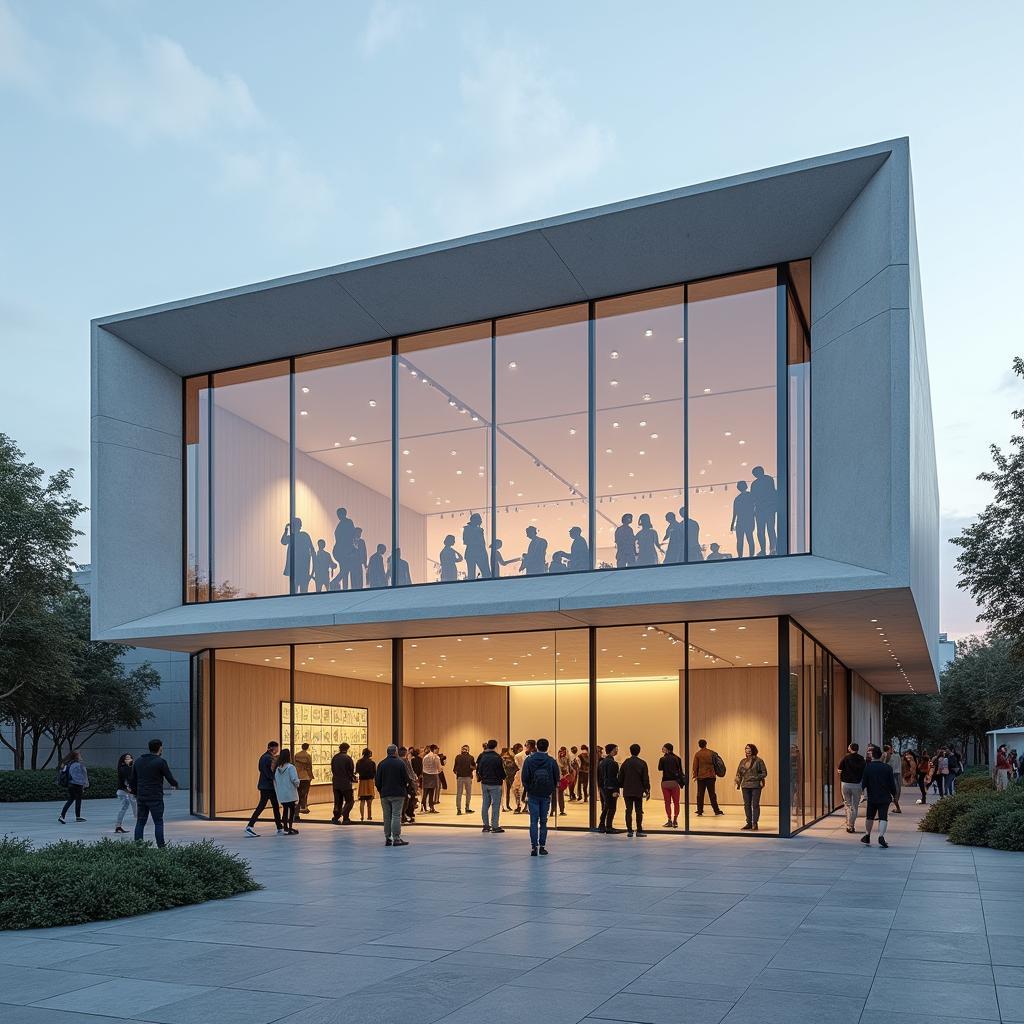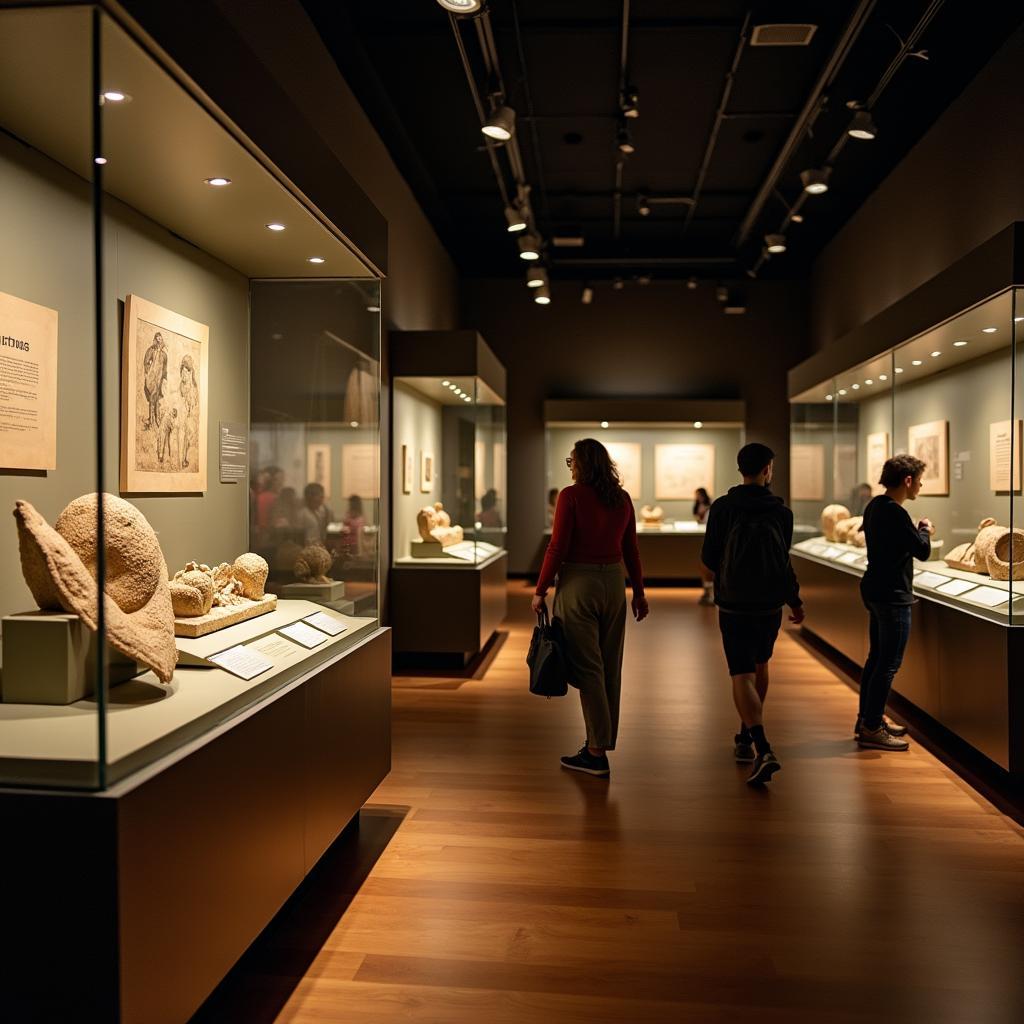Museums and art galleries frequently appear as topics in IELTS Speaking tests, particularly in Parts 1 and 2. This comprehensive guide will help you deliver impressive responses that demonstrate sophisticated vocabulary and natural fluency, essential for achieving high band scores.
 Modern museum exterior with glass facade and geometric architecture
Modern museum exterior with glass facade and geometric architecture
Part 1: Introduction and Interview Questions
Common questions you may encounter:
- Do you often visit museums?
- What type of museums do you prefer?
- Did you visit museums when you were a child?
- What’s the most interesting museum you’ve visited?
Sample answer (Band 8-9):
“I make it a point to visit museums whenever I travel to new cities. I’m particularly drawn to modern art museums because they challenge conventional thinking and often present thought-provoking installations. Recently, I visited the Museum of Modern Art in New York, which was an absolutely fascinating experience.”
Part 2: Cue Card
Your task is to describe a museum or art gallery you have visited. You should say:
- Where it was
- When you visited it
- What you saw there
- And explain how you felt about it
Similar to describe an art exhibition that left an impression on you, here’s a model answer:
Sample Answer (Band 8-9):
“I’d like to tell you about my memorable visit to the British Museum in London. I had the opportunity to explore this world-renowned institution during my trip to the UK last summer. The museum’s imposing Greek-revival architecture immediately caught my attention.
The highlight of my visit was the extensive Egyptian collection, particularly the Rosetta Stone, which proved instrumental in deciphering ancient Egyptian hieroglyphs. I was absolutely captivated by the meticulously preserved mummies and ancient artifacts that dated back thousands of years.
What struck me most was how the museum seamlessly blended historical significance with modern presentation techniques. The interactive displays and detailed explanations enhanced my understanding of various civilizations. I found myself completely immersed in the experience, spending nearly five hours exploring different galleries.
For those interested in describe a piece of art you saw and liked, the museum’s collection of Greek marbles was particularly impressive.”
 Museum interior showing ancient artifacts in glass display cases
Museum interior showing ancient artifacts in glass display cases
Part 3: Discussion Questions
Q: How have museums changed in recent years?
Sample Answer (Band 8-9):
“Museums have undergone significant transformation in recent years. They’ve embraced digital technology to create more interactive and immersive experiences. Many institutions now offer virtual tours, similar to describe an art exhibit that impressed you. They’ve also become more inclusive and accessible, focusing on engaging younger generations through social media and interactive exhibits.”
Key Vocabulary and Expressions
- Curator /kjʊəˈreɪtə/ (n): person who manages museum collections
- Exhibition /ˌeksɪˈbɪʃn/ (n): public display of art or artifacts
- Artifact /ˈɑːtɪfækt/ (n): historical object
- Interactive display /ˌɪntərˈæktɪv dɪˈspleɪ/ (n): exhibit that visitors can engage with
- Cultural heritage /ˈkʌltʃərəl ˈherɪtɪdʒ/ (n): traditions and objects passed down through generations
Examiner’s Tips
- Structure your description chronologically
- Use specific examples and details
- Include personal reactions and emotions
- Demonstrate range of vocabulary
- Maintain coherent flow throughout your response
Remember, when talking about describe a museum you visited as a child, focus on creating vivid descriptions that bring your experience to life.


